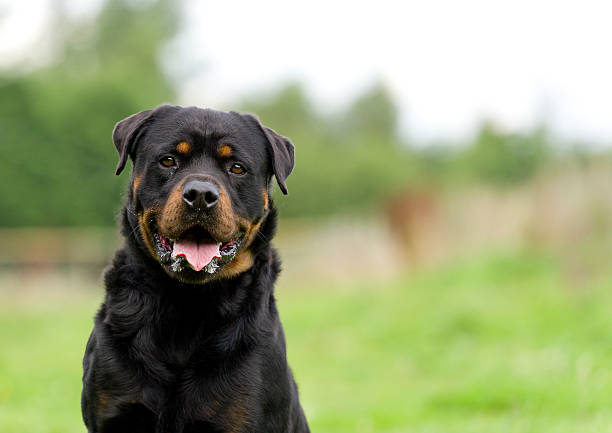ROTTWEILER:

Origin and History
Rottweilers trace their lineage back to ancient Rome, where they were used as herding and guard dogs. These early ancestors of the Rottweiler were valued for their reliability in driving and protecting cattle, as well as their capacity for guarding outposts along the Roman Empire’s expansive borders. With the decline of the Roman Empire, these dogs accompanied Roman troops across Europe, where they interbred with local dogs along the way.
The breed eventually found a prominent role in the town of Rottweil, a former Roman bath site in Germany, which became a regional livestock center. Here, they gained the name Rottweiler Metzgerhund, or “Butcher’s Dog of Rottweil,” for their role in driving cattle to market and protecting butchers’ money pouches tied around their necks. Over time, as rail transport reduced the need for cattle-driving dogs, Rottweilers faced a decline.
Revival and Modern Roles
In the early 20th century, the breed saw a revival due to their utility as police and military dogs. Their strength, intelligence, and trainability made them excellent choices for law enforcement roles. During both World Wars, they served various roles, including as messenger, ambulance, draught, and guard dogs. Today, Rottweilers are also used in search and rescue missions, as guide dogs for the blind, and as therapy animals, proving their versatility and utility.
Temperament and Characteristics
Rottweilers are known for their confidence and calm demeanor, but they can also be quite aloof with strangers, which makes them excellent guard dogs. They are inherently protective, a trait that can be shaped into aggressive behavior if not properly managed. However, when properly trained and socialized from an early age, they are generally well-mannered and obedient.
Rottweilers are deeply loyal to their families and can be very affectionate and playful within their home environment. They thrive on attention and interaction with their human families and can suffer if left alone for long periods or if inadequately stimulated mentally and physically.
Training and Care
Due to their size, strength, and protective nature, Rottweilers require early socialization and consistent, firm training. They respond well to positive reinforcement techniques such as treats and praise, and require an owner who can be a clear leader. The breed needs plenty of mental and physical exercise—they enjoy activities like walking, running, and retrieving, and excel in obedience, tracking, and agility challenges.
Rottweilers are generally healthy, but like many large breeds, they can be prone to certain genetic conditions, such as hip dysplasia and heart issues. Regular veterinary check-ups, a healthy diet, and adequate exercise are important to keep them in good health.
Conclusion
Rottweilers have a rich history that showcases their versatility and utility across various spheres—from ancient guard dogs to modern-day service animals. Their loyalty, intelligence, and strength make them formidable pets and working dogs. However, they require responsible ownership to ensure they are well-adjusted, sociable, and appropriately managed. In the right hands, Rottweilers are not just pets but loyal and loving members of the family, capable of providing protection, companionship, and love.